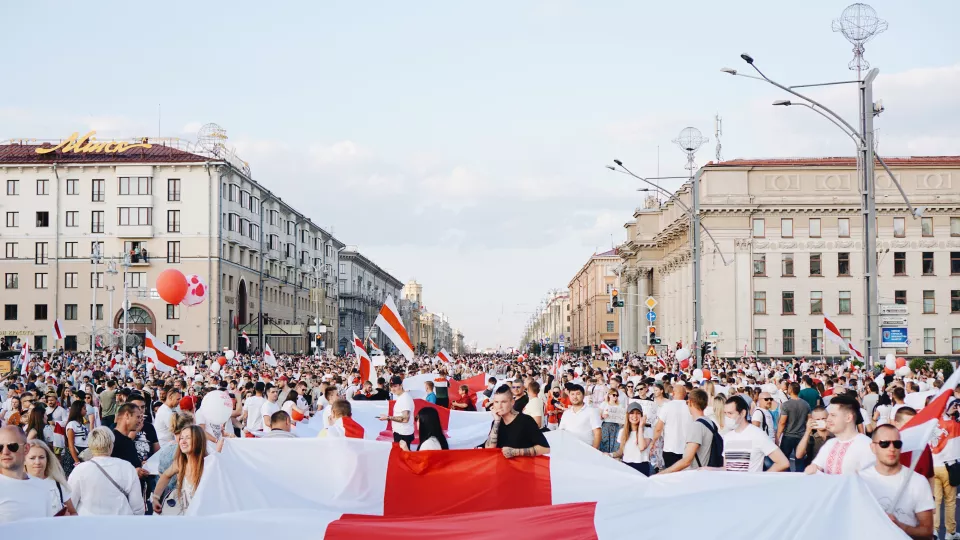Note: this article was originally published November 20, 2020.
Minchenia has spent the past five years researching the protests in Belarus. In her lecture she detailed how, when she started, protests were conventional and organized in the public, with protesters forming small and tightknit communities.
The current protests are dramatically different. Organised through networks, these demonstrations include both general marches and neighbourly gatherings. Next to the events on the streets are economic pressures through strikes, boycotts and even doxxing practices wherein hitherto anonymous police have their identities revealed.
State repressions have ebbed and flowed in the three months of unrest, with a notable spike in October. This has forced protestors to adapt to the changing context of how the state responds. The protests are now organised through networks of chats available on apps that the government is unable to block.
Minchena highlighted the creativity in the daily forms of dissenting behaviour as the reason for the perseverance of the 2020 protests. When the state blocks mobile data usage, protesters open up their Wi-Fi for public use. When state repression intensifies, protesters get help hiding. When big marches are no longer feasible, so-called ‘de-marches’, or hidden marches, are organised. In this, protesters walk the streets of cities seemingly alone, wearing flowers and other symbols to signal that they are silently protesting.
One especially novel aspect of the protests has been the representation and involvement of vulnerable social groups. Since August, large women’s marches have been held every week. A spike in police repression made the organisation of these more difficult. In response, elderly groups and people with disability started their own marches.
Similarly, workers organised large-scale strikes, and Minchenia highlighted how these previously apolitical groups have now become politicised, representing a fundamental shift in the political society of Belarus. The representation of both workers and elderly people as groups protesting against the Belarusian government is remarkable given that these groups are otherwise considered the core of Lukasjenka’s public support.
Minchenia concluded that although the optimism of protestors has fluctuated throughout these months, the protests themselves have been remarkably adaptive and creative in responding to a changing context of how the state responds. The current protests are unconventional and come in many different forms, representing different social groups. This self-organisation and network-like characteristic showcases how the Belarusian people have found a way to continue in what has become an unprecedented wave of protests in recent Belarusian history.


